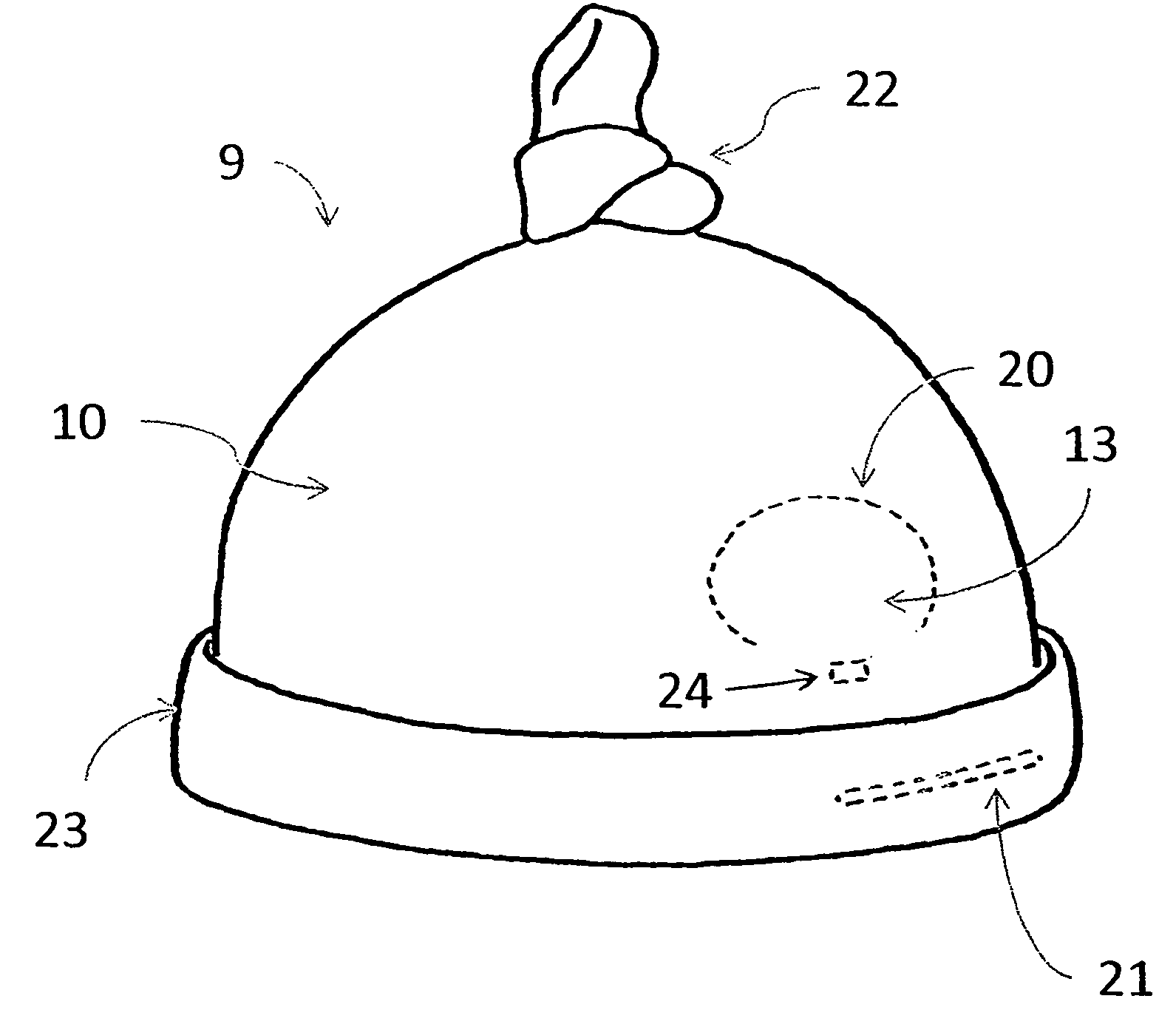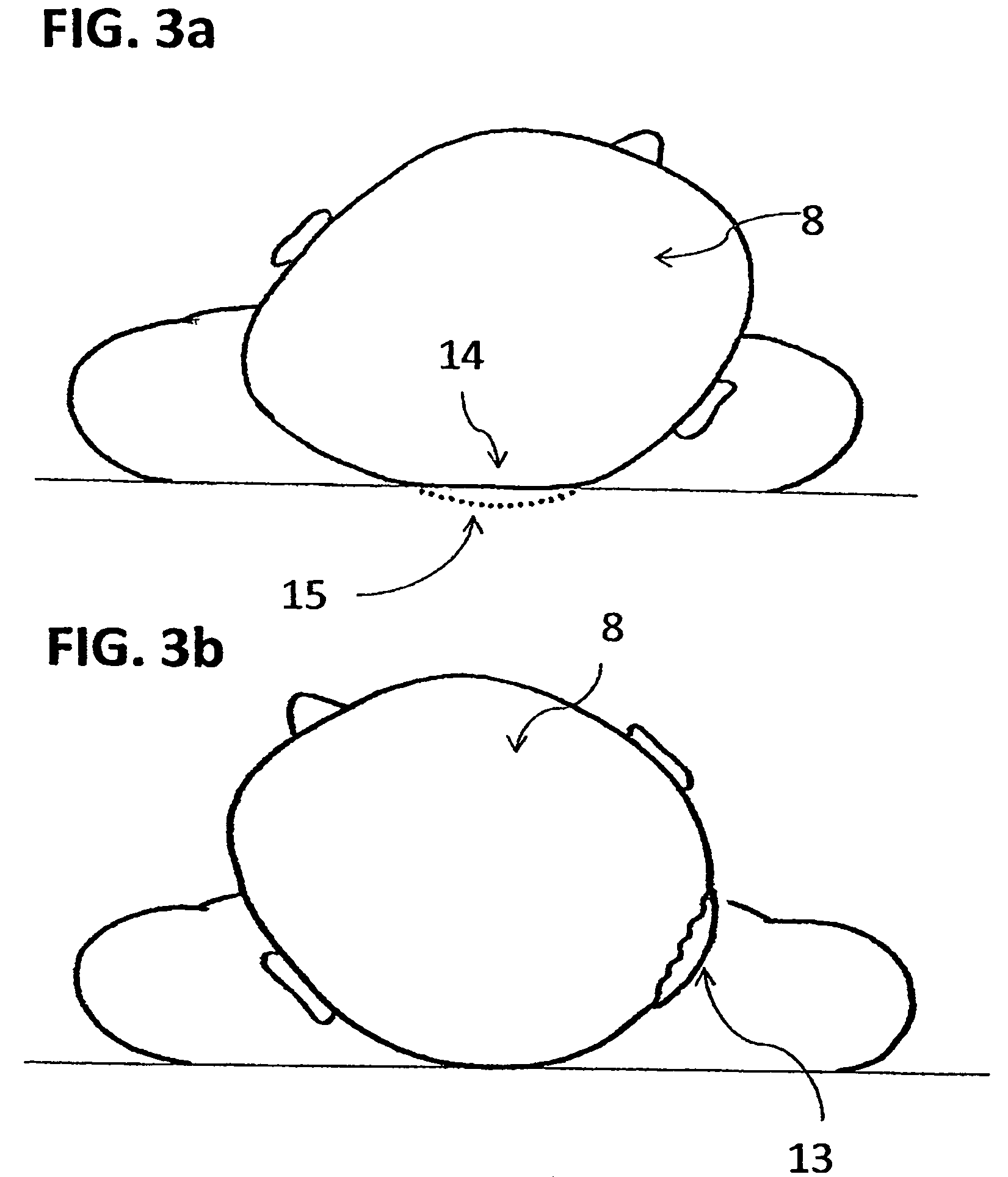Infant headwear for treating an infant's persistently maintained head position, seen in conditions such as plagiocephaly (baby flat head) and torticollis (wry neck)
a head position and infant technology, applied in the field of infant headwear, can solve the problems of increasing the risk of sids, directly contravening the latest aap recommendations, bulky, unsightly, etc., and achieve the effects of reducing the tendency of the infant's head, preventing the rotation of the infant's neck, and restoring the natural contour of the cranium
- Summary
- Abstract
- Description
- Claims
- Application Information
AI Technical Summary
Benefits of technology
Problems solved by technology
Method used
Image
Examples
Embodiment Construction
[0054]FIG. 1 illustrates an exemplary embodiment of an infant headwear 9 for the prevention or treatment of positional plagiocephaly and or torticollis. The headwear 9 comprises a soft, flexible Head Receiving Member (HRM) 10 in the form of but not limited to a hat, toque, beanie, or cap, sized and shaped to accommodate an infant's head 8. The HRM 10 may comprise any number of suitable materials, such as but not limited to: natural and synthetic fabric, which may or may not exhibit one or more apertures; woven, net, mesh materials or the like; waterproof materials; or any combination of said materials. The HRM 10 may be constructed with one or more layers of the said materials or combination thereof. For ease of explanation, and in no way limiting, the HRM 10 illustrated in FIG. 1 comprises an outer layer 11 and an inner layer 12 as viewed in the double layered embodiment of FIG. 2. As a non-limiting example, one embodiment comprises a solid fabric outer layer 11 with a soft, breath...
PUM
 Login to View More
Login to View More Abstract
Description
Claims
Application Information
 Login to View More
Login to View More - R&D
- Intellectual Property
- Life Sciences
- Materials
- Tech Scout
- Unparalleled Data Quality
- Higher Quality Content
- 60% Fewer Hallucinations
Browse by: Latest US Patents, China's latest patents, Technical Efficacy Thesaurus, Application Domain, Technology Topic, Popular Technical Reports.
© 2025 PatSnap. All rights reserved.Legal|Privacy policy|Modern Slavery Act Transparency Statement|Sitemap|About US| Contact US: help@patsnap.com



